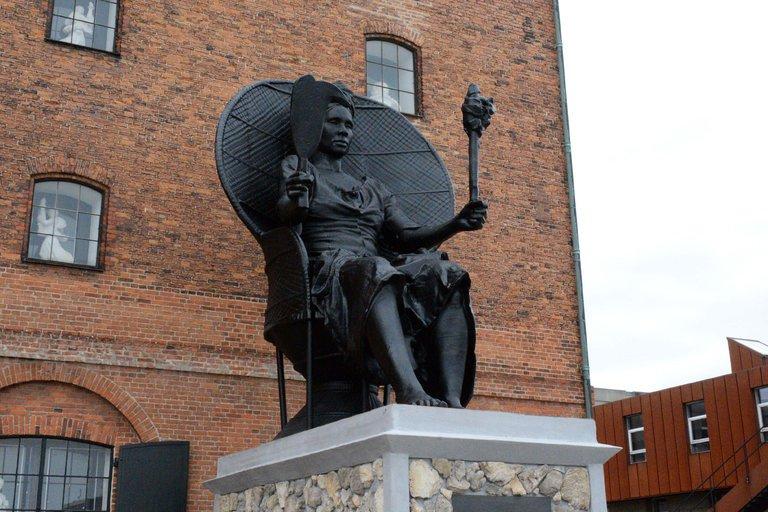
Photo credit: Nick Furbo
Last Saturday marked the unveiling of a 23-foot statue erected in honor of Mary Thomas, a woman of Caribbean descent who led the 19th-century ‘Fireburn’ uprising against Danish colonial rule in Denmark. The two Black women artists who created the statue, Jeannette Ehlers of Denmark and La Vaughn Belle of the Virgin Islands call their creation: “I Am Queen Mary.”
Thomas is reported to have been one of the “three queens” who led a rebellion in 1878 in St. Croix in protest of harsh labor conditions in Danish colonies after slavery had been abolished. The revolt has gone on record as “the largest labor revolt in Danish colonial history,” which left 50 plantations and most of the city of Frederiksted, St. Croix destroyed by raging fires.
The statue showcases Mary seated on a wicker thrown, donning a head wrap, with a torch in her left hand and a West Indian cane bill (tool used to cut sugar cane) in her right hand. The cane bill and torch symbolize the resistance strategies that she and her counterparts employed to amplify their voices in a time when an outspoken black woman was rarely entertained, if at all. Artists Ehlers and Belle have also confirmed that the statue was both inspired by and reminiscent of the iconic 1967 photo of Black Panther Party founder, Huey P. Newton.

According to Queen Mary creators, the statue is not only the first monument in honor of a Black woman in Denmark, but it is also the first ode to those who fought against the influence of colonialism in the Caribbean. The unveiling was also timed to coincide with the 100th anniversary of Denmark selling the Virgin Islands to the U.S. in March 1917.
Ironically, the statue was originally not commissioned to stand in the public space it occupies. In their own way, the revolutionary creators channeled Queen Mary and “pushed” their way into a public space deeming her story too important to go untold any longer. “It’s a hybrid of our bodies, nations and narratives. It extends the conversation beyond the centennial year and gets people to really question what is their relationship to this history,” remarked Belle.

